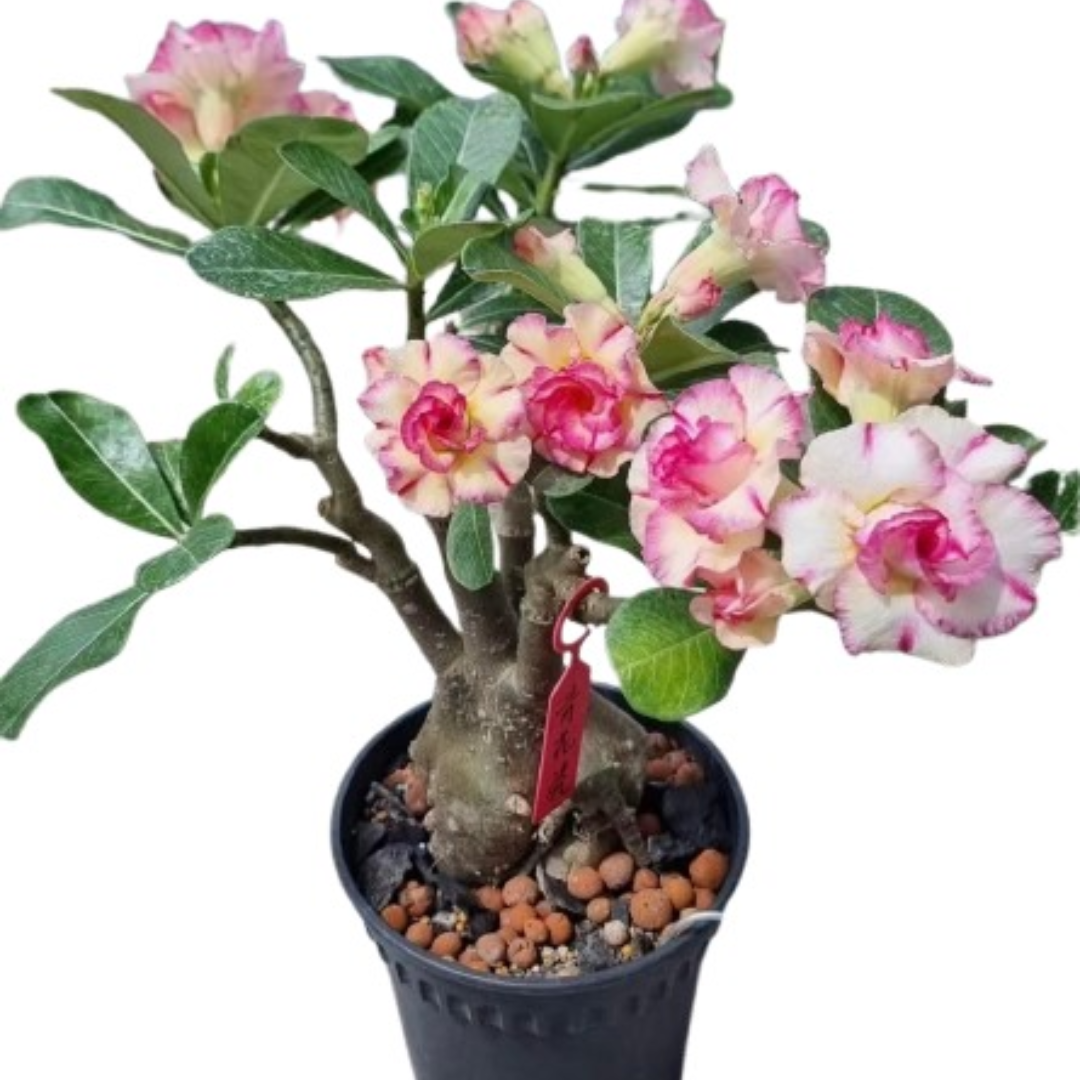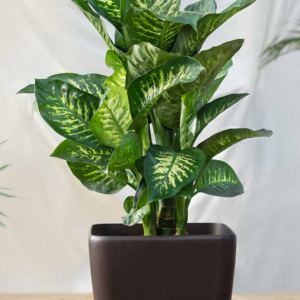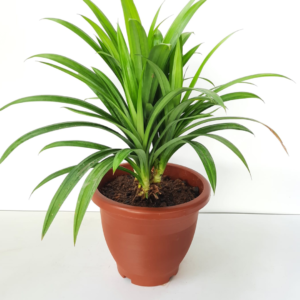Care Instructions:
- Light: The Desert Rose Bonsai thrives in bright, direct sunlight. It requires at least 6 hours of sunlight each day to bloom and grow healthily. A south- or west-facing windowsill is ideal, or place it in a sunny spot where it can soak up ample sunlight.
- Watering: Water the Desert Rose Bonsai when the top 1-2 inches of soil feel dry to the touch. It is drought-tolerant and prefers slightly dry conditions between waterings, so be careful not to overwater. Always ensure the pot has good drainage to prevent root rot.
- Temperature: This bonsai prefers warm temperatures between 70°F and 90°F (21°C to 32°C). It thrives in a warm, stable environment and should be kept away from cold drafts or air conditioners, as it is sensitive to cold.
- Humidity: The Desert Rose Bonsai prefers a dry to moderate level of humidity. Avoid overly humid conditions, as this can cause issues like mold or root rot. However, during the growing season, occasional misting may help it thrive, especially in drier indoor environments.
- Soil: Use a well-draining cactus or succulent potting mix for the Desert Rose Bonsai. A mix that contains sand, perlite, and other materials that provide excellent drainage is ideal to prevent waterlogging and promote healthy root growth.
- Fertilizing: Feed the Desert Rose Bonsai with a balanced, diluted fertilizer every 4-6 weeks during the growing season (spring and summer). Avoid fertilizing during the dormant months in fall and winter. Too much fertilizer can lead to lush growth at the expense of blooming.
- Pruning & Shaping: Pruning and shaping are key to maintaining the plant’s unique form and encouraging more blooms. Trim any dead or damaged branches, and remove spent flowers to promote new growth. You can also prune the plant to encourage a more compact, sculpted shape. As a slow-grower, occasional pruning will help keep its bonsai shape.
- Repotting: The Desert Rose Bonsai should be repotted every 1-2 years to refresh the soil and provide room for the roots to grow. Repot in the spring, when the plant is coming out of its dormant period, to avoid disrupting the flowering cycle.






Reviews
There are no reviews yet.